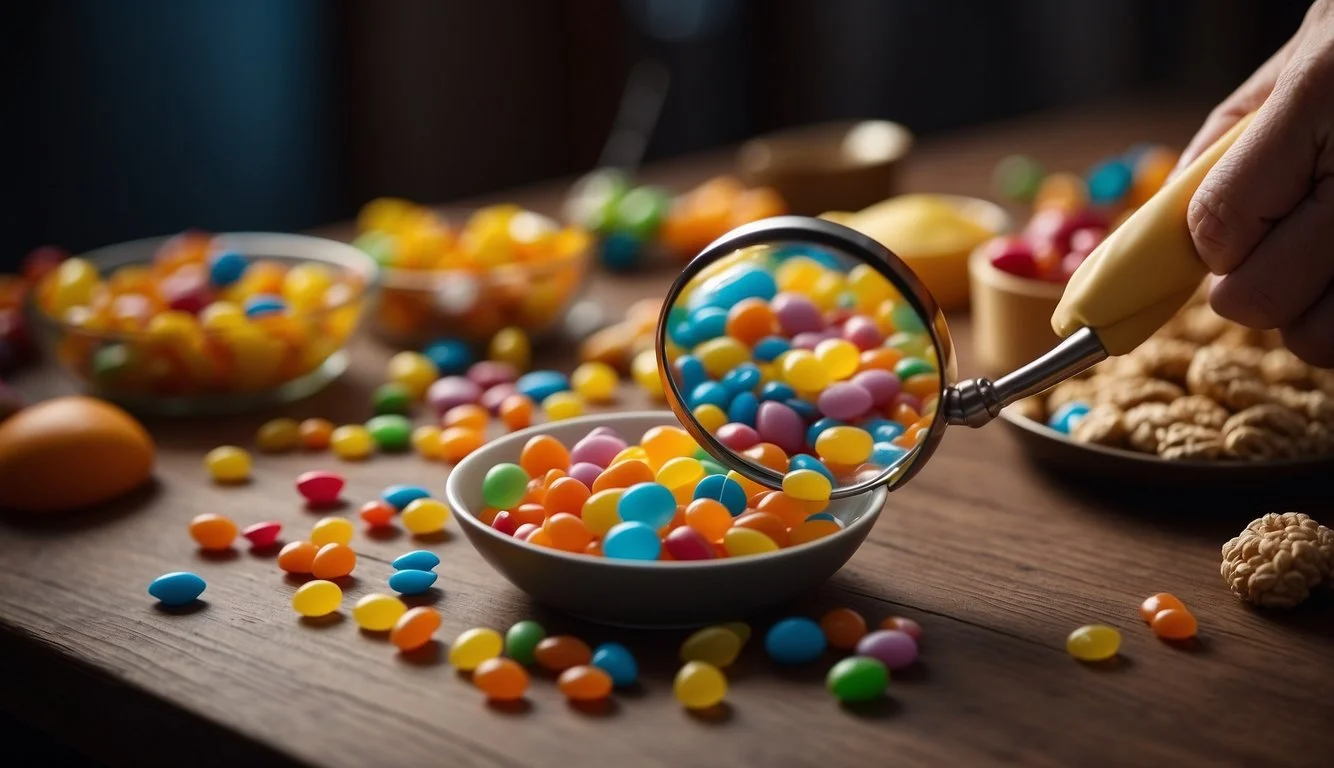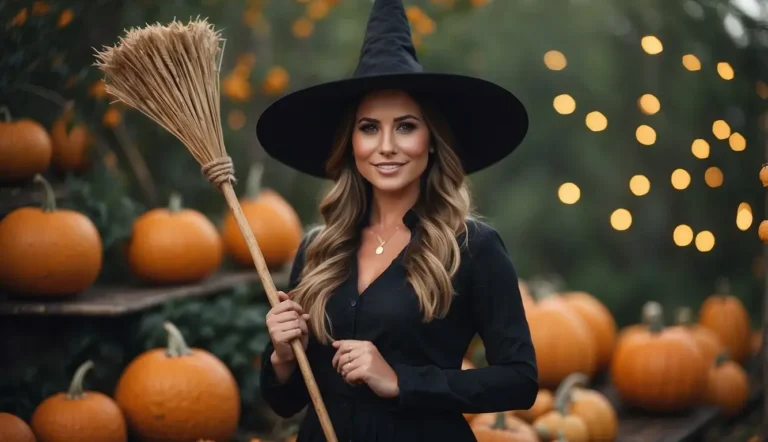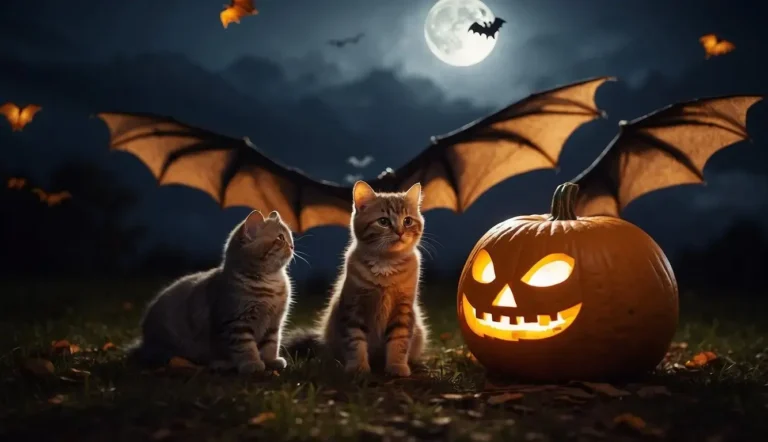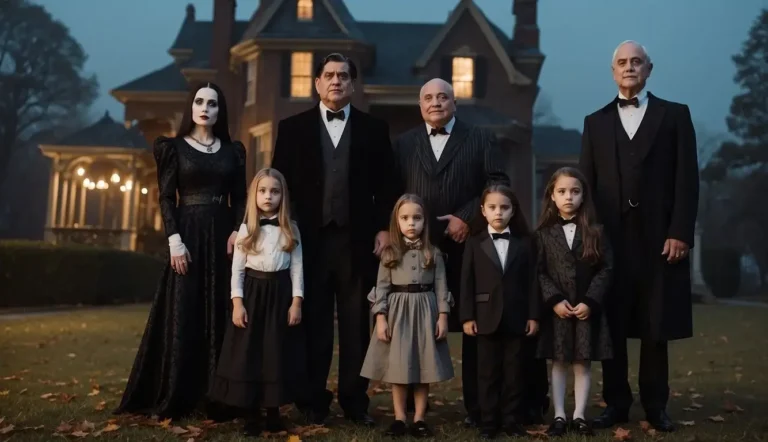Explore the How to Check Halloween Candy methods thoroughly, a duty I have wholeheartedly undertaken by delving into many discussions and guidelines to present you with the best approaches. I’m proud to offer a simple and reliable way to ensure your little ghouls enjoy a safe and happy Halloween.
Key Takeaways
- Prioritizing safety on Halloween is crucial for a joyous celebration.
- Thorough examination of trick-or-treating candy is necessary.
- Establishing a secure trick-or-treating environment is beneficial.
Inspecting Halloween Candy
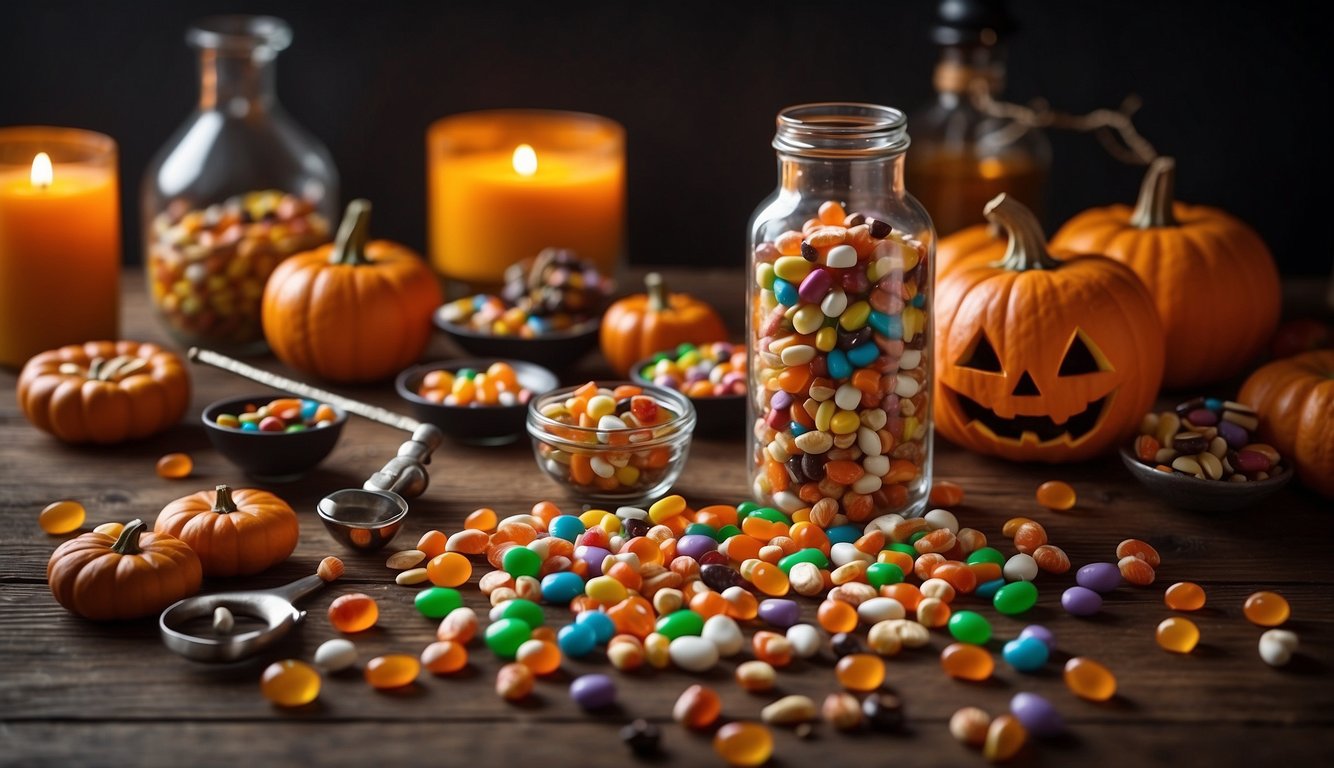
When I check Halloween candy for safety, I pay close attention to the condition of the wrappers and am mindful of any dietary restrictions. Let me walk you through the steps to ensure your candy is safe to enjoy.
Visual Inspection for Tampering
The first thing I do is visually inspect each piece of candy. I look for any signs of tampering, like pinholes, loose wrappers, or torn edges. If a wrapper seems damaged or is not sealed properly, I set it aside. It’s important to examine closely—any unusual appearance could be a sign of tampered candy.
Checking for Allergens and Dietary Restrictions
Next, I check for allergens. I read the ingredients list on each piece of candy to confirm they’re safe for anyone with dietary restrictions. Boldly labeled wrappers are an ally in this task—clearly stating common allergens like nuts, dairy, or gluten. This step is crucial for those who may have allergies or dietary requirements.
Confirming Candy Freshness
Lastly, I confirm the candy’s freshness. I look for any discoloration or signs that the candy might be old or stale. Wrappers should be intact and without any hints of spoilage. Fresh candy will have a vibrant color and intact shape, with no odd smells or textures. I don’t take the risk if the candy doesn’t look right.
Ensuring Candy Is Safe to Eat
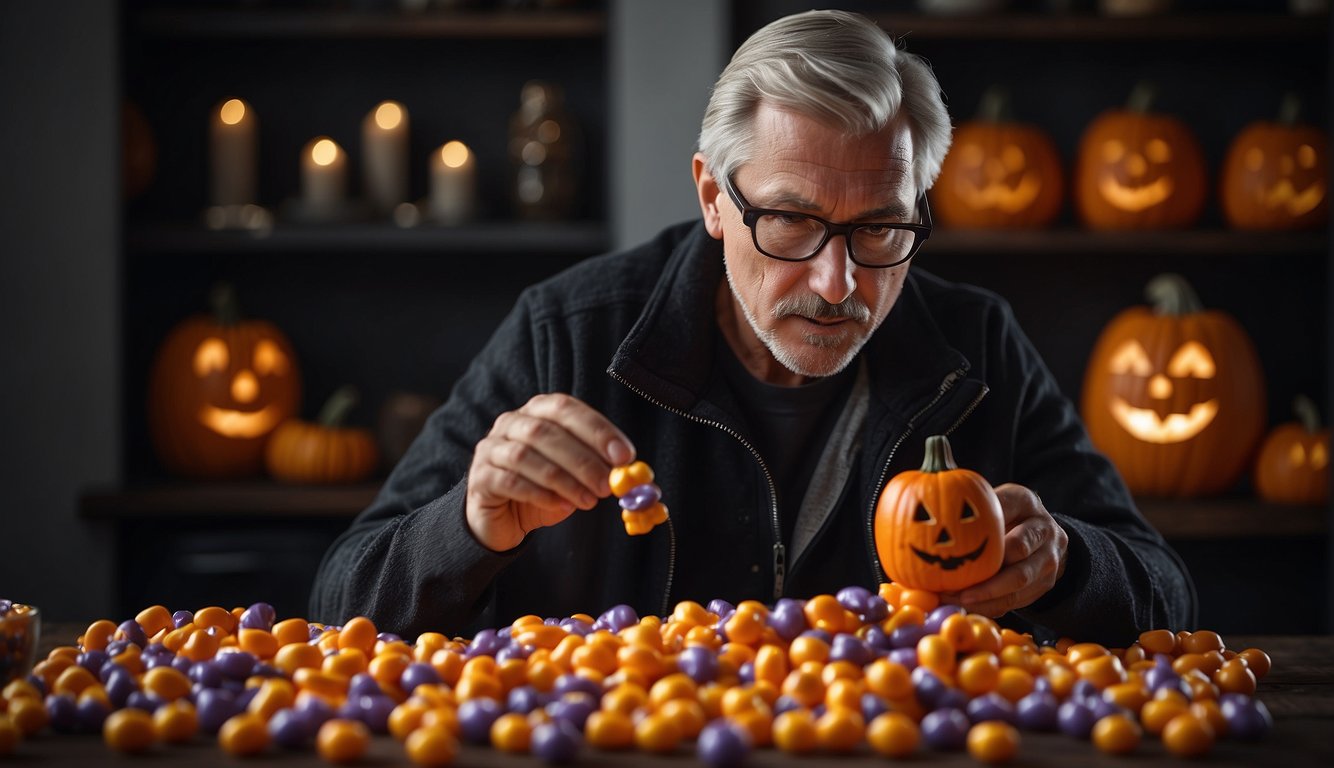
Before letting my kids dive into their Halloween haul, I make it a point to ensure each piece of candy is safe to consume. My approach is methodical, focusing on preventing choking, avoiding certain items, and knowing what to do if tampering is suspected.
Preventing Choking Hazards
Taste and appearance are important, but safety is paramount. I always check for potential choking hazards especially for my little ones. Here’s what I do:
- Inspect the size of candies: Candy should be small enough to avoid choking but not so tiny that it can easily get lodged in a child’s throat.
- Watch for hard candies: These can be particularly risky, so I tend to keep an eye out and set them aside for older kids or adults.
Avoiding Homemade and Unwrapped Items
While homemade items may be made with love, they can pose a risk. Here’s how I handle these:
- Set aside homemade treats: I don’t let my kids eat them unless they’re from someone I trust implicitly.
- Dispose of unwrapped items: Candy should be in its original wrapping. If it’s not, I throw it out to avoid any risks of contamination or food allergies.
Actions If Tampering Is Suspected
Sometimes, candy may look a bit “off,” and that’s when I take immediate action to protect my kids from potential hidden dangers:
- Isolate the item: I put on gloves and remove the suspicious candy from the rest.
- Contact authorities: If there’s a clear sign of tampering, I don’t hesitate to call the poison control center for advice.
Following these precautions ensures a fun and safe Halloween for my children.
Creating a Safe Trick-or-Treating Environment

As we prepare for the fun of Halloween, I want to share some effective strategies to ensure that my children remain safe while trick-or-treating. Creating a secure atmosphere is about planning and cooperation with different members of the community.
Tips for Parents and Guardians
As parents and guardians, we’re responsible for establishing a secure trick-or-treating environment. Here’s how I make sure to do that:
- Be Vigilant: Always inspect candy before my children indulge. I look for tampering signs such as opened wrappers or odd smells.
- Establish Trust: I teach my kids to only visit houses that we trust and are well-lit.
- Community Connection: By joining community groups and checking social media for safety updates, we stay informed about neighborhood conditions.
- Communication with Authorities: I ensure we’re aware of any guidance issued by local law enforcement regarding Halloween safety.
Creating a plan and rehearsing it with my children ensures that they know what to do, even when I’m not with them.
Navigating the Neighborhood Safely
Even with the best preparations, it’s paramount to practice safety while out and about. Here’s my approach:
- Walk in Groups: We always travel in groups, as there’s safety in numbers. Sticking together is key.
- Stay Visible: Each child carries a flashlight or wears reflective accessories to be visible to cars at night.
- Follow Traffic Rules: We always cross the street at designated crossings and make eye contact with drivers before crossing in front of cars.
By being proactive and aware of possible risks, I can create a safer environment for all the children in our neighborhood to enjoy Halloween.
Smart Practices for Halloween Candy Sharing
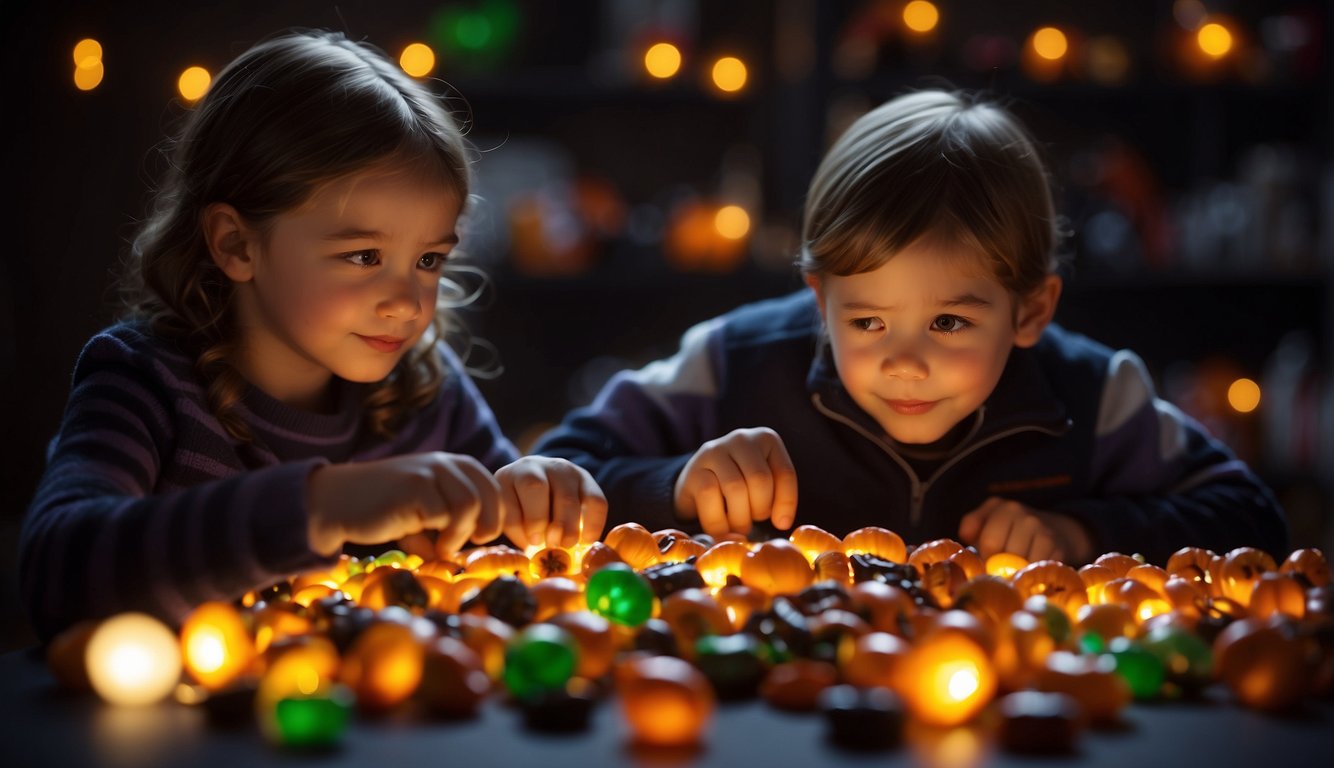
In sharing Halloween treats, I always prioritize both fun and safety. It’s important to ensure that all kids can enjoy their haul without worries. Here’s how I manage sorting and choosing treats that cater to everyone’s needs, including considerations for allergies and dietary restrictions.
Sorting and Organizing Treats
When I get home with my kids’ Halloween candy, the first thing I do is sort through the treats. I create separate piles for different types of candies, checking candy labels for any expiration dates to avoid the risk of spoilage.
- Sealed and Safe: I make sure wrappers are intact and every piece is properly sealed.
- Allergy Check: As some kids have allergies, I set aside any treats containing common allergens like nuts or dairy.
- Special Diets: Candy that might not suit all dietary restrictions goes into another pile. This might include dietary preferences or any religious considerations.
Once sorted, I make sure that every treat passes the odor test; any weird smells could indicate an issue with the candy’s freshness. And I always take time to read the labels for signs of tampering or unfamiliar branding, which could compromise candy safety.
Choosing Safe and Inclusive Alternatives
After sorting, I focus on what to share. It’s my responsibility as a parent to ensure that my kids’ Halloween is memorable for all the right reasons, including the safety and inclusion of their friends.
- Non-Food Items: For kids with severe allergies or dietary restrictions, I keep an array of non-food treats. This could be stickers, glow sticks, or fun pencils.
- Healthy Options: If I’m looking for alternative treats, I might choose packets of pretzels, fruit leathers, or individual boxes of raisins, since they’re generally safe for all kids.
I keep an eye out for popular candies with known safe versions, like free-from alternatives, and stock up on those. Sharing on Halloween should be inclusive, allowing all kids to experience the joy of the holiday without fears of allergies or encountering treats incompatible with their dietary needs. This way, Halloween remains a safe, fun holiday for everyone in the neighborhood.
FAQ – How to Check Halloween Candy?
Why is it important to check Halloween candy?
It’s important to inspect Halloween candy to ensure it hasn’t been tampered with, is safe to consume, and is appropriate for the age and dietary restrictions of the child. This helps prevent potential choking hazards, allergic reactions, and other health concerns.
What should I look for when checking Halloween candy?
Look for unsealed packages, tears, pinholes, or any signs of tampering. Ensure the candy is in its original, factory-sealed packaging. Homemade items or baked goods should be discarded unless you know and trust the source.
Is it safe to accept homemade Halloween treats?
It’s generally recommended to accept homemade treats only from people you know well and trust. For children trick-or-treating in the neighborhood, it’s safer to stick to commercially packaged treats.
If you enjoyed reading about How to Check Halloween Candy?, check out our other articles:
- Costumes Halloween Essentials 2024: Choosing the Perfect Outfit
- Scary Adult Halloween Costumes 2024: Unleash Your Frightening Side!
- Addams Family Halloween Costumes 2024: Inspiration for Your Spooky Ensemble
- Mom and Daughter Halloween Costume Ideas for a Spooktacular Duo 2024
- Halloween Animals 2024: Furry & Feathery Friends of the Spooky Season
Feel free to also check out our other Articles from the category “Community Events“ and don’t forget to follow us on Pinterest.

